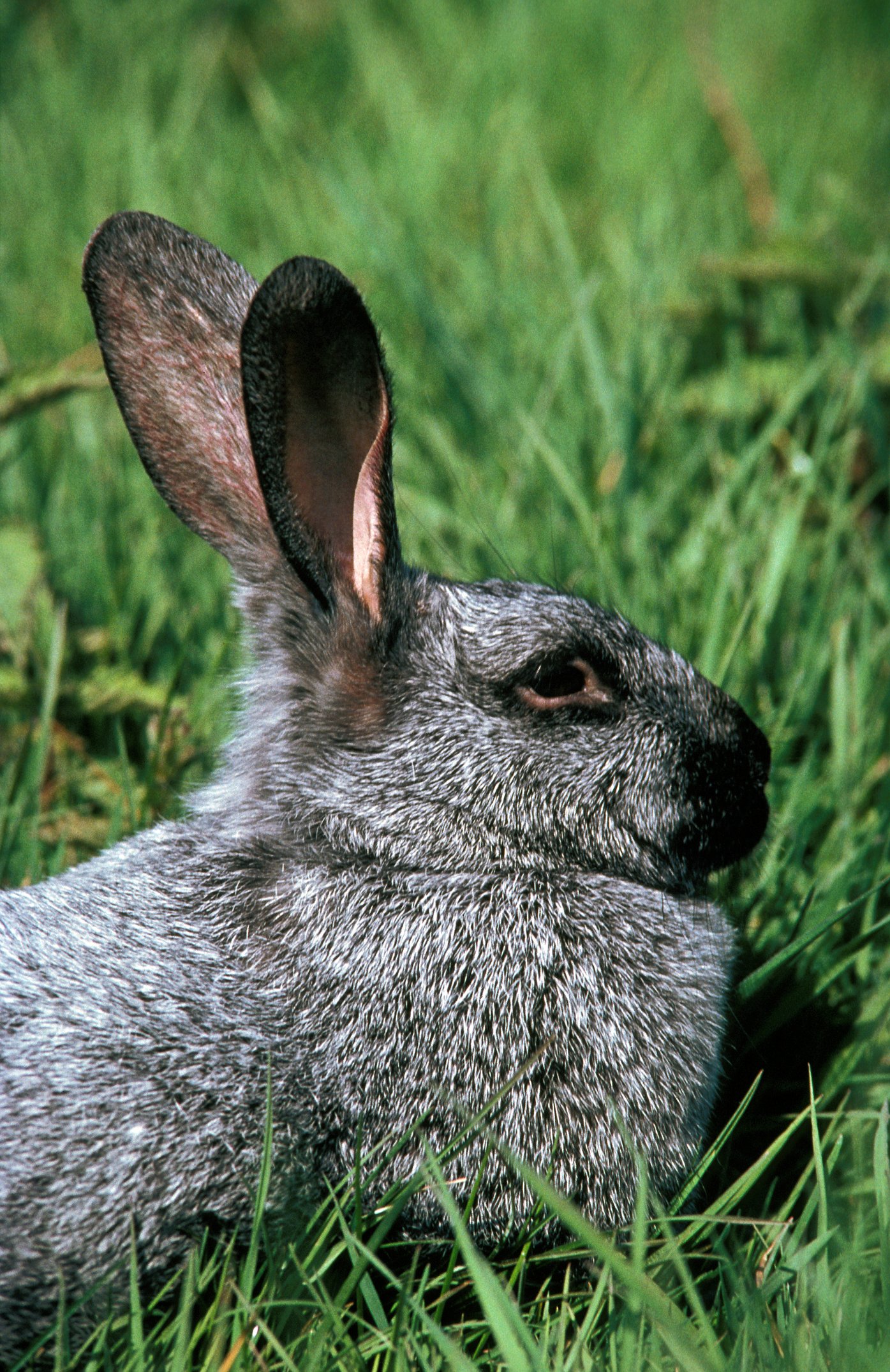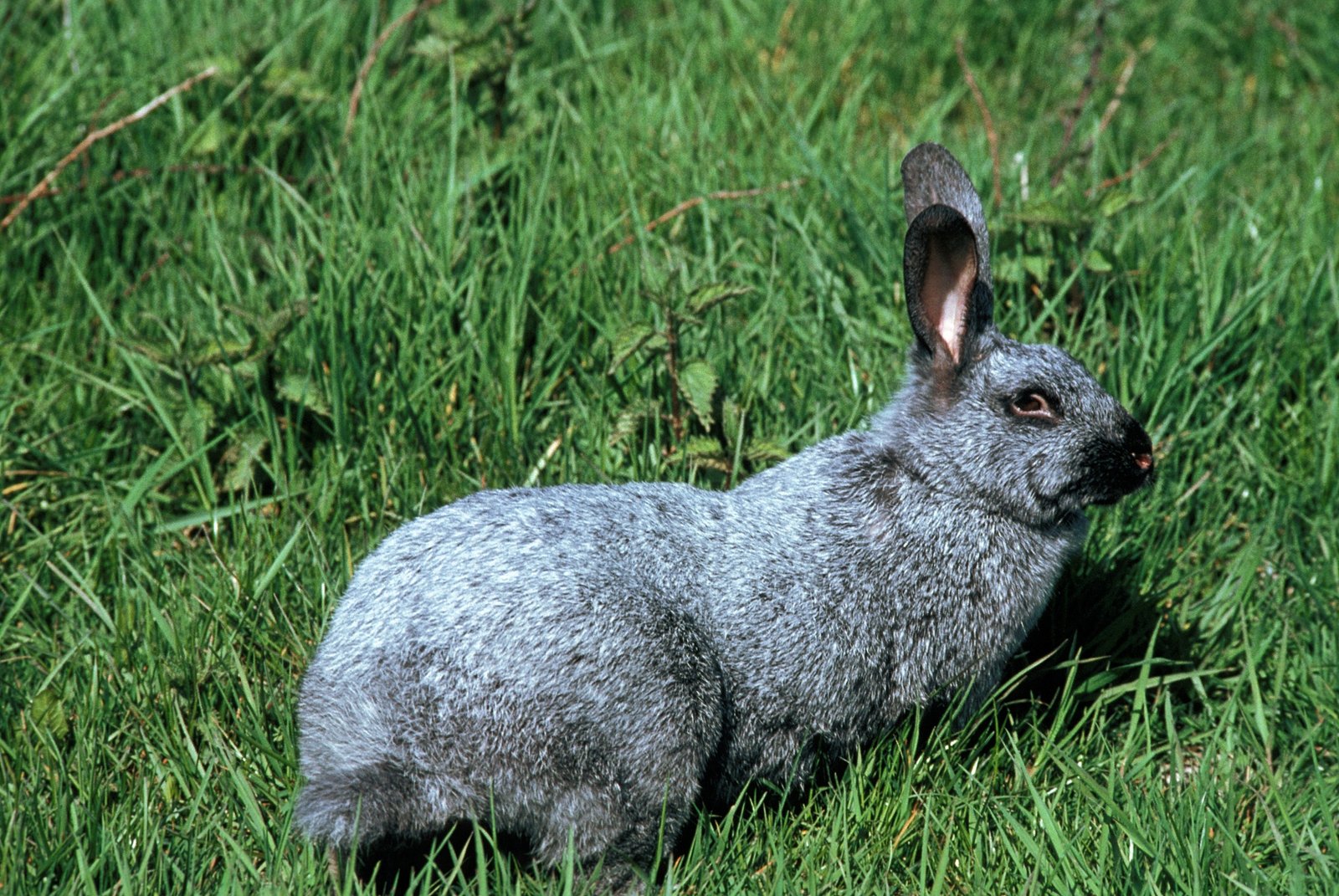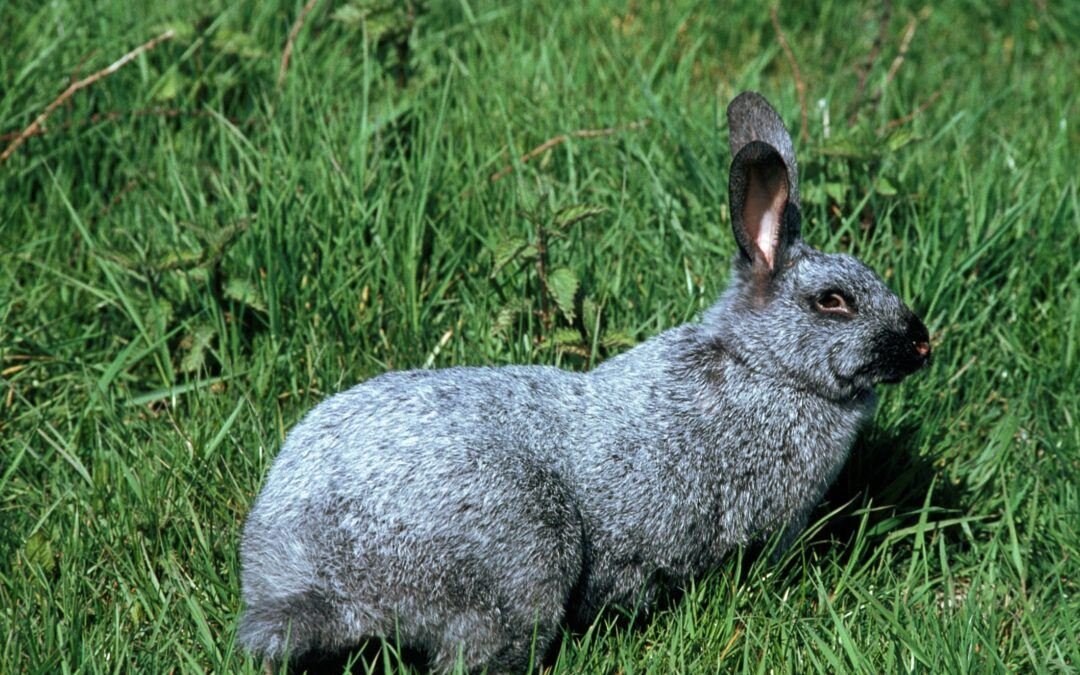Champagne d’Argent rabbits are the oldest of all Argent bunnies. They are known for their silver coats and docile personality. These bunnies are not only good for rabbit shows, but they are also excellent pets. Since they are friendly, they can get along with seniors and kids. If you plan to get a Champagne bunny, this blog post will help you find out if it is the best pet for you!

Facts about Champagne d’Argent Rabbits
|
Body Size |
Medium |
|
Body Weight |
9 lbs to 12 lbs |
|
Body Type |
Commercial |
|
Lifespan |
7 to 9 years |
|
Colors |
Brun, blue, noir, creme, and champagne |
|
Similar Breeds |
Creme, Brun d’Argent |
|
Best Suited for |
Single, couples, seniors, families with older children |
|
Origin |
France |
Background and History
No one knew where did Champagne d’Argent rabbits exactly originate. Many believed the breed was developed in Champagne, France, during the mid-1600s. Out of the seven Argente rabbit breeds, Champagne d’Argent is the oldest. Because of their silvery coats and body features, they were used as show and meat rabbits. In the 1700s, they started to gain popularity.
These bunnies were initially called French Silvers in France. But they were soon called “Champagne d’Argente” after they were exported to England. The British Rabbit Council (BRC) recognized five varieties of this rabbit. They are Brun, Blue, Noir, Creme, and Champagne.
It was in the mid-1920s when this breed arrived in the United States. Oscar F. Schultz and other breeders from different states brought the bunnies. Initially, they had long coats, but the breeders improved them, making them soft and short.
Besides the coats, they also made the bunnies larger than the English and French Argente. Out of seven Argente breeds, only three were recognized by ARBA. These rabbits were the Champagne Argent, Creme d’Argent, and Argente Brun. Only two varieties of Champagne are recognized by ARBA: creme and champagne.
Features of Champagne d’Argent Rabbits
Champagne d’Argent rabbits are medium-sized bunnies that can grow between 9 and 12 lbs. They have commercial-type bodies, having solid flesh in their hindquarters, hips, and shoulders. Their backs are slightly arched, and they have medium-length ears erecting on its head.
The Champagnes have short, soft flyback coats hanging loosely on their bodies. These bunnies were born with solid black furs. But they develop silver coats once they reach maturity. The silver markings on their belly, back, and face appeared when there are eight months old. Black guard hair can be present in their coats, depending on their age.
When they reach maturity, their ears and noses become darker than other body parts. You may also notice dark slate blue undercolor in their coats. As of now, only two varieties are acknowledged by ARBA. These are creme and champagne.
Temperament and Behavior
Because of their docile personality, Champagne d’Argent rabbits are excellent family pets. They can quickly get along with children. But if your kids are still small, supervise them in handling to prevent rabbit injuries. When Champagnes feel sick, they love sitting on their owner’s lap. They would also appreciate it if you would cuddle them.
Unlike other rabbits, Champagnes are not overly active. They are similar to well-mannered cats that prefer to have a nap. However, you should let them play outdoors so they can play and exercise. At first, these furry pets tend to be shy. They may also get skittish when strangers handle them. But once they get used to socializing, they become more approachable.
Champagnes love the attention of their owners. However, there are times when they prefer to be alone and enjoy their privacy. You must get at least a pair of these bunnies. A single bunny may feel lonely and get depressed. They are not only sociable to their owner but also towards other rabbit companions.
You should not miss training these rabbits because they are known to be brilliant pets. In fact, they can figure out how things work without any training or experience. If you want to keep them indoors, it would be better to train them how to use the litter box. As a fancy breed, they require special care. They are ideal pets for singles, couples, seniors, and families with older children.

Grooming Champagne d’Argent Rabbits
Champagne d’Argent rabbits are easy to groom. Thanks to their short, soft coats! You only have to brush their coats at least once a week to ensure they are in good condition. If your bunny is shedding, brush its coat twice or thrice a week. When grooming them, ensure that you use a proper brush, like a slicker brush. They can suffer from injuries if you use an inappropriate comb.
As much as possible, never bathe Champagnes. Like other rabbits, they can suffer from a heart attack, stress, or shock if submerged in water. Instead of washing them, you can clean them through dry bathing and spot cleaning. However, there are instances when a vet advises bathing a rabbit. For shows, rub a prescribed conditioner on your pet’s coat to make it glossy.
You must also check weekly if your bunny’s nails are too long. It is crucial to keep its nails trimmed to prevent it from injuring itself. You must also use rabbit nail clippers since bunnies have small nails. If it is your first time, it is advisable to have a partner who will hold the bunny. Remember, don’t trim its nails too short to avoid cutting the quick.
Giving your rabbit enough hay can keep your pet’s teeth trimmed and healthy. Bunnies with overgrown teeth may suffer pain, leading to weight loss. You can also provide sticks and chew toys to your bunny to keep its teeth trimmed. It will also help if you regularly bring it to the vet to check its teeth.
Proper Diet
To be healthy and robust, Champagne d’Argent rabbits require a proper diet. The amount of food you should give them will depend on their age, size, and activity. Seventy to eight percent must consist of hay. Fiber is essential to maintain a well-functioning gut since it improves motility. One good source of fiber is hay.
Besides hay, you must provide your pet with two to three kinds of leafy greens. It must comprise 10% of its diet. The ideal amount of leafy greens to feed your pet is one cup per 4 lbs. You must split the cup amount in two since rabbits eat twice daily. Watch out not to overfeed a Champagne since it may result in health issues like obesity.
Pellets can also be provided, but they should be 5% of the diet. Not all pellets are suitable for bunnies. Thus, you have to choose high-supplementary pellets. The pellets must have at least 18% fiber, 14% protein, 0.9% calcium, and 2%. They should not also replace hay as the primary food for your rabbit.
Most importantly, you should provide unlimited fresh water to your bunny. It improves the gut’s motility, flushes excess calcium, and keeps the cells healthy. Rabbits find it more natural to drink in bowls, but it would be better to provide them with water bottles. Bunnies tend to step on the bowls, making their coats wet.
Habitat
If you prefer to let your bunny live outdoors, you must provide a safe environment. For outdoor Champagnes, the minimum hutch size should be 6 ft x 2ft x 2ft. It must be big and wide enough for your pet to hop and stretch comfortably. As much as possible, provide an exercise area. It must be a separate space from where your pet sleeps and eats.
Some supplies needed inside the rabbit’s enclosure are bedding, a litter tray, a food bowl, and a water bottle. You can use straw or hay as bedding materials. However, they must be at least five inches to keep your pet comfortable. You must also regularly clean your bunny’s litter box to prevent it from soiling.
The hutch must be sturdy and durable to protect your pet from predators and harsh weather. You must also place it where there is enough shade to protect your pet against the sun’s direct heat. Also, it would be better to put it near your house so you can easily monitor your pet’s condition.
If you plan to keep your pet indoors, make sure to make your home rabbit-proof. Bunnies love to chew, so they won’t hesitate biting cables, wires, and pieces of furniture. You must keep electric wires out of reach. Rearranging your furniture is also helpful in protecting it from your pet’s sharp teeth.
Health Issues of Champagne d’Argent Rabbits
Snuffles
Champagne d’Argent rabbits are hardy pets. But they can still suffer from common rabbit diseases. One of these is the respiratory problem called snuffles. Pasteurella spp or Staphylococcus spp can cause it. Rabbits that are suffering from dental disease are more prone to this condition.
Rabbits with snuffles tend to have watery eyes and discharge on their noses. You may also observe that your bunny is frequently sneezing and head tilting. Other symptoms may include skin sores and matted fur. If left untreated, the disease may turn to pneumonia, a fatal condition for rabbits.
Vets treat snuffles by giving antibiotics to treat antibacterial infections. If your pet has clogged tear ducts, the vet will flush them. Abscesses caused by the infection may need to be surgically removed. Suppose your pet is already showing neurological symptoms due to the disease. In that case, the vet will treat it to make your bunny feel comfortable.
Conjunctivitis
Like humans, rabbits may also suffer from conjunctivitis, also known as the weepy eye. At least thirty percent of rabbits suffer from this condition. The possible causes of conjunctivitis are allergies, infection and bacteria, and infectious agents. It can also be caused by dental disease or genetics.
Conjunctivitis symptoms include rubbing the eyes, matted fur, and watery eyes. An antibiotic may be given to treat this condition. If it is an allergy, the vet may advise you to change the type of hay you give to your pet. Surgery may be needed if it is due to your bunny’s genes.
Frequently Asked Questions
How much do Champagne d’Argent rabbits cost?
Champagne d’Argent rabbits are uncommon pets, so they are more costly than other breeds. A Champagne rabbit of good quality can be between $50 and $100. If you’re looking to show quality Champagnes, expect to pay more. You can check online for reputable breeders to ensure a bunny that is in good condition.
What leafy greens can I give to Champagne d’Argent rabbits?
Some leafy greens you can give to Champagne d’Argent rabbits are cilantro and watercress. You can also provide bok choy, romaine lettuce, and beet greens. As much as possible, never feed iceberg lettuce, rhubarb, mushroom, and lilies. These are only a few foods you should never give to your bunny.

Conclusion
Champagne d’Argent rabbits are famous on show tables because of their silver coats. Besides their unique features, they are also good pets. They are friendly and caring, winning the hearts of their owners. But like other breeds, they need care and attention to grow healthy and happy. Regular grooming, proper diet, and a safe home will help these bunnies to thrive.



